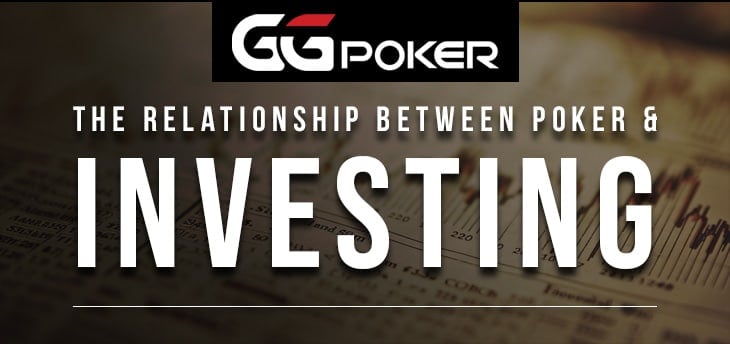The Relationship Between Poker and Investing

The intricate dance between poker and investing is a fascinating exploration of risk, strategy, and psychology. Both arenas demand a keen understanding of the odds, a strong emotional resilience, and an unwavering commitment to decision-making under uncertainty. Let’s shuffle through the lessons these worlds offer, revealing insights that resonate far beyond the felt and the trading floor.
Recognizing a Similar Pattern and Managing Risks
At the heart of both poker and investing is the skillful management of risk. Understanding the basic rules is crucial for recognizing patterns and managing risks. In poker, betting begins with forced bets and continues with player decisions, which is essential for making informed decisions. Astute poker players and savvy investors don’t shy away from risk; instead, they learn to recognize patterns and calculate odds to make informed decisions. In poker, it’s about knowing when to fold, call, or raise based on the hand you’re dealt and the behavior of your opponents. In investing, it’s about analyzing market trends and financial statements to identify worthwhile opportunities. The key lesson? Understanding risk is essential, and managing it effectively involves making strategic decisions during betting rounds in both fields.
The Importance of a Strategic Mindset
Strategy is your compass in the tumultuous seas of poker and investing. Without a coherent strategy, you’re merely reacting to events, which is a surefire way to diminish your chances of success. Poker follows a similar pattern in each round, which helps in developing a strategic mindset. A strategic mindset involves long-term thinking, planning, and the flexibility to adapt as conditions change. In poker, this means playing not just the hand in front of you but also the players and the game itself. When investing, this involves having a clear investment thesis and the patience to stick to it, even when short-term market movements seem to contradict your approach. Strategic thinking is crucial, especially during the final betting round in poker.

Profiles in Poker Hand Rankings and Investing
As we explore the shared strategies of poker and investing, certain individuals exemplify these lessons in real life. Three notable figures who stand out are Bill Perkins, David Einhorn, and Dan Shak, each known for their prowess in both the financial markets and the poker table.
Bill Perkins brings an energy trader’s acumen to the poker world, demonstrating the importance of calculated risks and high rewards. His approach to both trading and poker is marked by a boldness that only comes from a deep understanding of stakes involved. Perkins’ high-stakes game decisions mirror his trading moves, where both require a keen sense of timing and risk assessment.
David Einhorn, founder of Greenlight Capital, is another exemplary figure who demonstrates how strategic thinking applies across the board. Einhorn’s notable 18th place finish at the 2006 World Series of Poker highlights his ability to apply financial principles to poker. His philanthropic decision to donate his winnings underscores the ethical dimension of using one’s skills for broader benefit, reflecting the social responsibility aspect of modern strategic investing.
Dan Shak specializes in commodities trading but also excels in poker, where he has reached numerous final tables in high-stakes tournaments worldwide. His success in both fields is a testament to his analytical skills and his ability to remain poised under pressure—qualities essential for both trading and poker.
These profiles serve as practical examples of how the skills required for financial investing overlap significantly with those needed for successful poker playing. They not only manage risk and analyze odds but also exemplify the emotional discipline and strategic mindset discussed earlier.
Emotional Discipline
If there’s one trait that both successful poker players and investors share, it’s emotional discipline. Emotional discipline can help a player become the remaining player by making strategic decisions and maintaining composure. The ability to keep a cool head under pressure, whether facing a bad beat on the river or a stock market crash, is invaluable. Emotional discipline helps you to make rational decisions based on logic and strategy rather than fear or greed. This is where the famous poker face becomes a metaphor for investor resilience—showing no emotional weakness, maintaining discipline, and sticking to your strategy, even in the face of unexpected outcomes.
The Value of Diversification
“Don’t put all your eggs in one basket” is sage advice, whether you’re deciding on a hand to play or a stock to invest in. Diversification is a key principle in both poker and investing for managing risk and maximizing potential returns. In poker, this means not relying on a single style of play but adapting your strategy based on the game and your opponents. Understanding other forms of poker and adapting strategies accordingly can enhance your gameplay. When investing, it translates to spreading your investments across different asset classes, sectors, and geographical regions to reduce risk and tap into various sources of returns.

The Power of Patience and Timing
Patience is a virtue, especially when the stakes are high. Both poker players and investors must master the art of timing—the right moment to make a move, whether it’s going all-in or executing a trade. Sometimes, the best action is inaction, waiting for the opportune moment when the odds are in your favor. This lesson underscores the importance of patience, waiting out unfavorable conditions, and striking when the time is right.
Learning from Losses
In both poker and investing, losses are inevitable. Analyzing five card hands can help players learn from their losses and improve their strategies. What separates the greats from the rest is their ability to learn from these setbacks. Analyzing your losses to understand what went wrong and adjusting your strategy accordingly is crucial. This process of continuous learning and improvement is what enables growth and long-term success.

The Role of Intuition in Online Poker
While data and analysis are critical, there’s also a place for intuition in both poker and investing. Experience in classic games like Texas Hold’em can enhance a player’s intuitive decision-making skills. Sometimes, the numbers only tell part of the story. Experienced players and investors develop an intuitive sense when something feels off or too good to be true. This “gut feeling” can be the result of years of experience, a subconscious synthesis of information that’s hard to quantify but can be incredibly valuable when making decisions.
Conclusion
The parallels between poker and investing offer profound lessons on risk management, strategy, emotional discipline, and the continuous pursuit of improvement. By embracing these lessons, individuals can enhance their decision-making skills, not just on the felt or the trading floor, but in various aspects of life. The relationship between poker and investing underscores a universal truth: success in any endeavor requires a blend of knowledge, strategy, and the right mindset. Whether you’re calling a bluff or picking a stock, the principles remain the same. Embrace the lessons from both worlds and watch as your skills—and your stakes—reach new heights.
